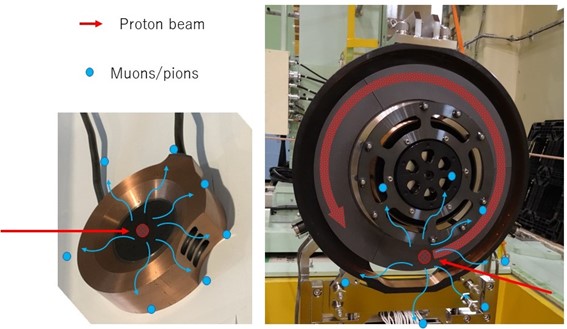
Abstract
Institute of Materials Structure Science, High Energy Accelerator Research Organization (IMSS-KEK) has been conducting research in materials life science and fundamental physics by using muon beams of the world’s highest quality and intensity. The muon beams are produced by irradiating proton beams on a graphite muon target at Japan Proton Accelerator Research Complex (J-PARC). Under the technical collaboration with Paul Scherrer Institute (PSI) of Switzerland, which had developed the target in advance, the development of a rotating target that can withstand high-intensity proton beam has been promoted at J-PARC as well. However, the bearings that support the rotating body fail within a year in Target E at the world most intense continuous proton beam facility HIPA of PSI, requiring the experiments to be stopped and the target to be replaced. Therefore, the group in IMSS-KEK developed the rotating target taking advantage of a new kind of bearing that could achieve a longer life. By adopting these bearings, the long-term operation from 2014 to 2019 was realized. Based on these results, the same bearings were adopted at PSI, and in December 2021, the stable continuous operation period reached one year, the best after a long period of several bearing failures at PSI. J-PARC and PSI, the world’s two major muon facilities, are good rivals in science, and at the same time, they are striving to improve their technologies through mutual collaboration. This technology can be applied to various rotating target in the world’s high-intensity accelerators.
